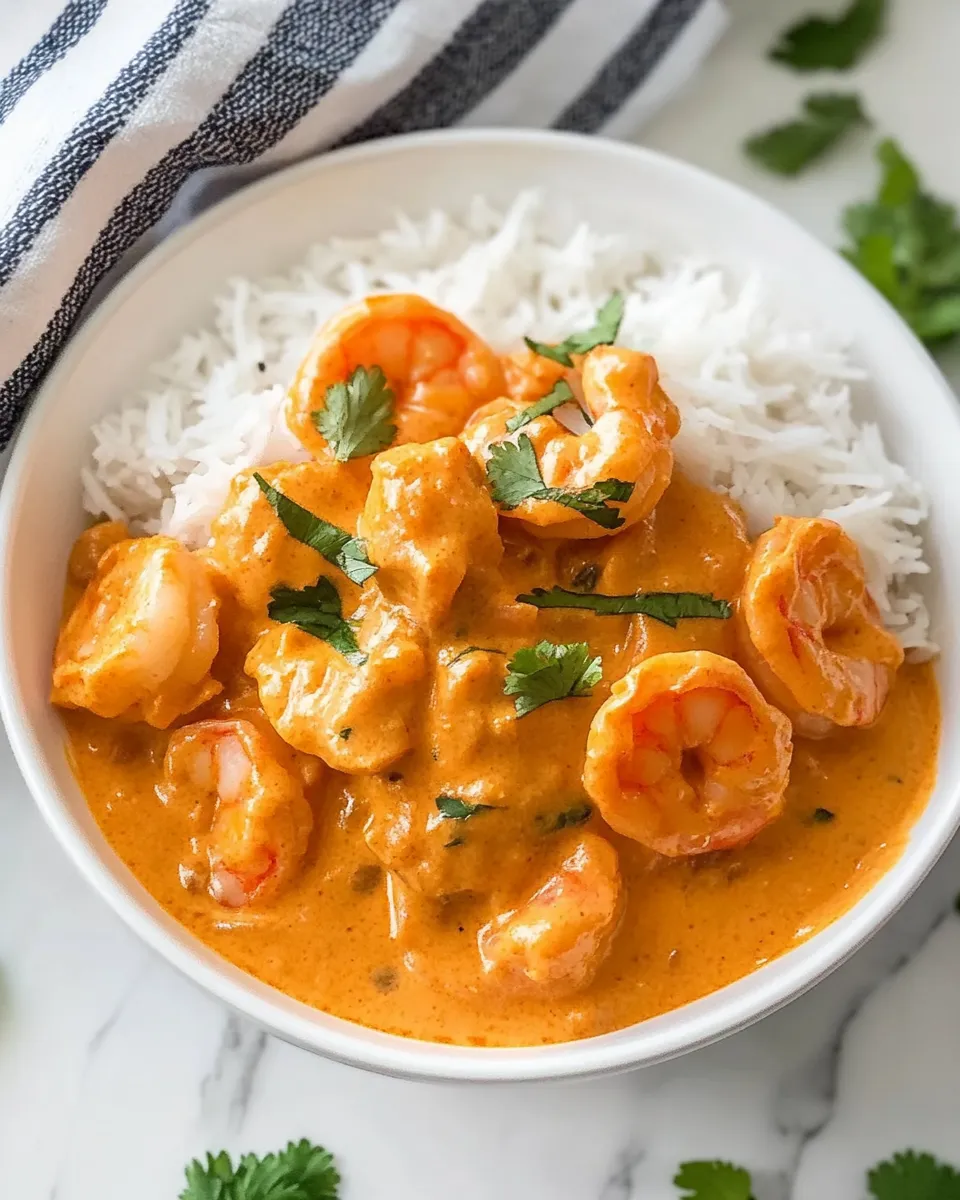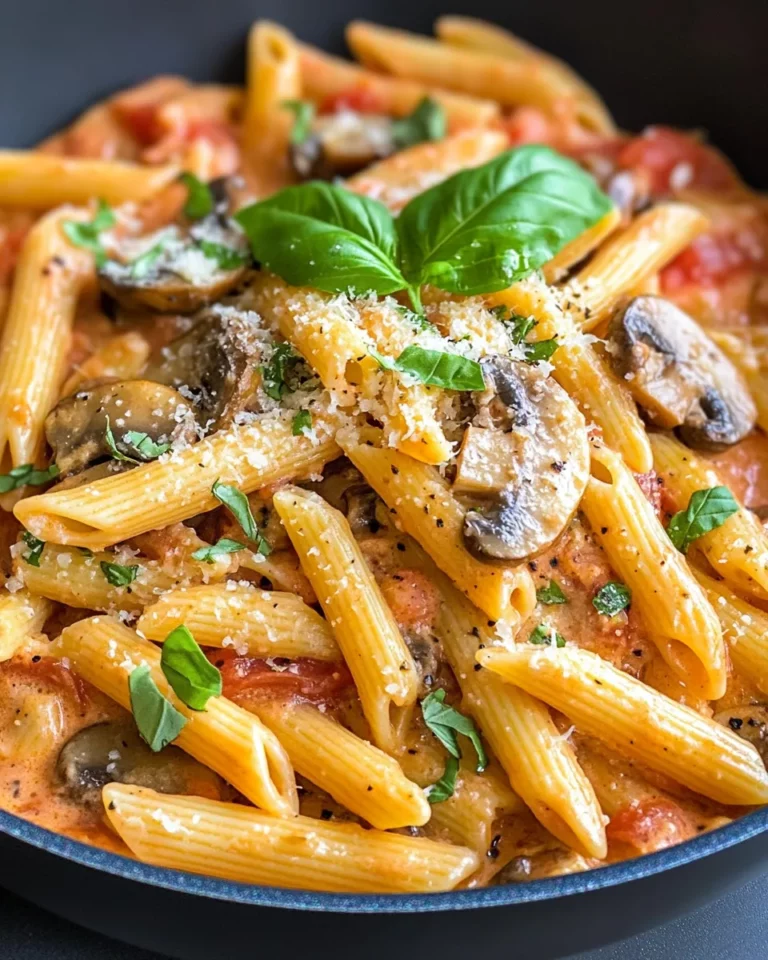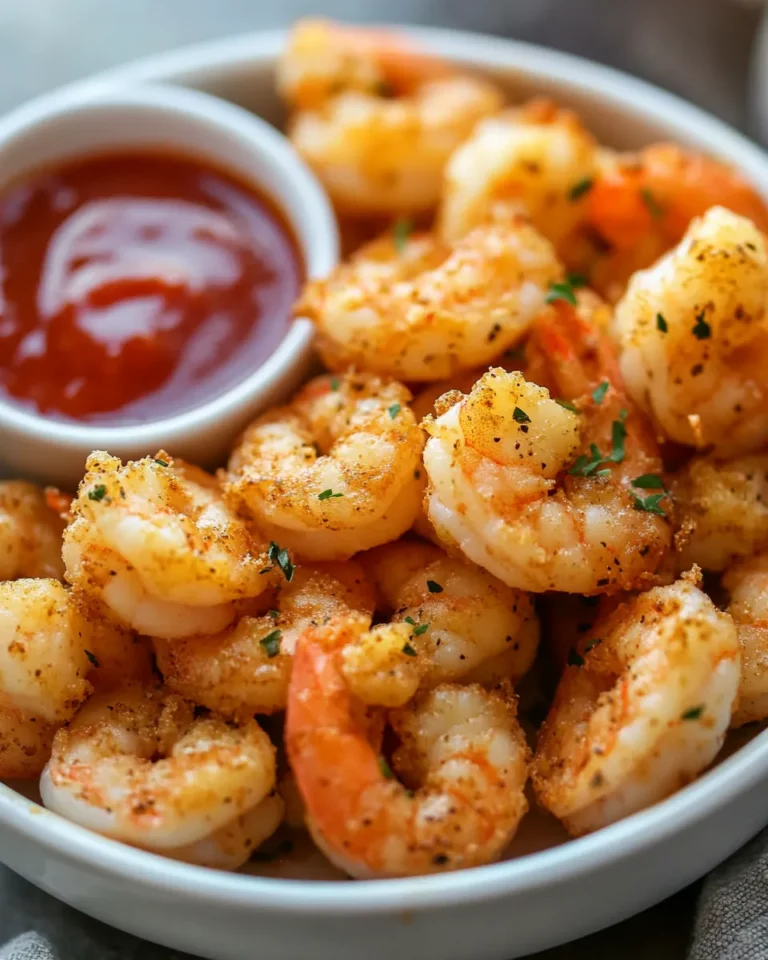Coconut Shrimp Curry
If you’re looking for a dish that combines the creamy richness of coconut milk with the vibrant spices of Indian cuisine, this Coconut Shrimp Curry is your new go-to recipe. It’s packed with flavor, simple to make, and perfect for a cozy dinner or a special occasion. Tender shrimp cooked in a luscious, spiced coconut tomato sauce creates a perfect harmony of tastes and textures that will leave you craving more.
Why This Recipe Is a Must-Try
This Coconut Shrimp Curry is a fantastic way to bring a burst of exotic flavors to your dinner table without spending hours in the kitchen. The combination of fragrant spices—like turmeric, cumin, coriander, and garam masala—with creamy coconut milk creates a sauce that’s both comforting and exciting. Shrimp cooks quickly and absorbs the flavors beautifully, making this dish ideal for busy weeknights or when you want a restaurant-quality meal at home.
Not only is this curry delicious, but it’s also versatile and easy to customize. Whether you want to make it spicier, milder, or add some veggies, this recipe is a brilliant base to experiment with. Plus, it’s naturally gluten-free and packed with protein, making it a balanced and wholesome choice.
Ingredients
- 2 tablespoons coconut oil
- ½ yellow onion, finely diced
- 1 teaspoon ginger, grated
- 1 teaspoon garlic, grated
- ½ teaspoon ground cumin
- ½ teaspoon ground coriander
- ½ teaspoon garam masala (optional)
- ½ teaspoon chili powder
- 1 teaspoon ground turmeric
- 1 cup tomato sauce or plain passata
- 1 cup coconut milk (fresh or canned)
- 1 teaspoon brown sugar
- Salt and pepper, to taste
- 1 pound (450 g) shrimp, peeled and deveined (I used 31-35 count)
- 1 teaspoon lime juice
How To Make Coconut Shrimp Curry
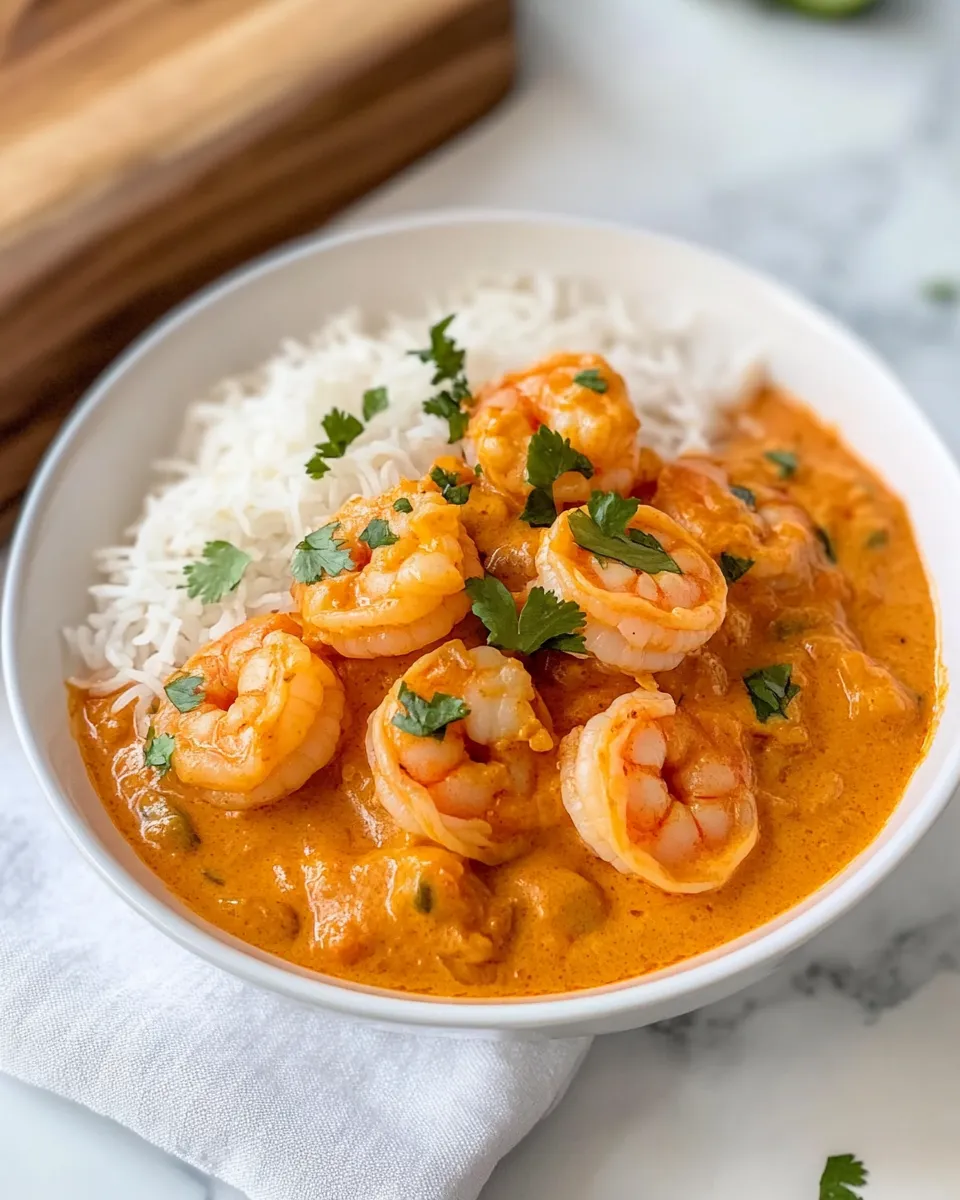
Step 1: Prepare Your Ingredients
Start by peeling and deveining your shrimp if that hasn’t been done already. Finely dice the yellow onion and grate fresh ginger and garlic. Having these prepped will make the cooking process smooth and efficient.
Step 2: Sauté the Aromatics
Heat 2 tablespoons of coconut oil in a large skillet or saucepan over medium heat. Once the oil is hot, add the diced onion and sauté until translucent and soft, about 4-5 minutes. Add the grated ginger and garlic, stirring frequently, and cook for another 1-2 minutes until fragrant.
Step 3: Toast the Spices
Add the ground cumin, ground coriander, garam masala (if using), chili powder, and ground turmeric to the pan. Stir well to coat the onions and release the spices’ aromas. Toasting the spices in oil helps deepen their flavors, so don’t skip this step!
Step 4: Add Tomato Sauce and Coconut Milk
Pour in 1 cup of tomato sauce or plain passata, stirring to combine. Let it simmer for about 3 minutes to reduce slightly. Then, add 1 cup of coconut milk and stir again until the sauce is smooth and creamy.
Step 5: Season the Sauce
Add 1 teaspoon of brown sugar, salt, and pepper to taste. The brown sugar balances the acidity of the tomato sauce and enhances the overall flavor. Let the sauce simmer gently for 5 minutes to meld all the ingredients together.
Step 6: Cook the Shrimp
Add the peeled and deveined shrimp to the simmering sauce. Cook for about 3-4 minutes, stirring occasionally, until the shrimp turn pink and opaque. Be careful not to overcook them, as shrimp can become tough when cooked too long.
Step 7: Finish with Lime Juice
Remove the pan from heat and stir in 1 teaspoon of fresh lime juice. This brightens the flavors and adds a lovely hint of acidity that balances the richness of the coconut milk.
Step 8: Serve and Enjoy
Serve your Coconut Shrimp Curry hot over steamed basmati rice, with warm naan bread, or alongside your favorite veggies. Garnish with fresh cilantro or chopped green onions for an extra pop of color and freshness.
Expert Tips
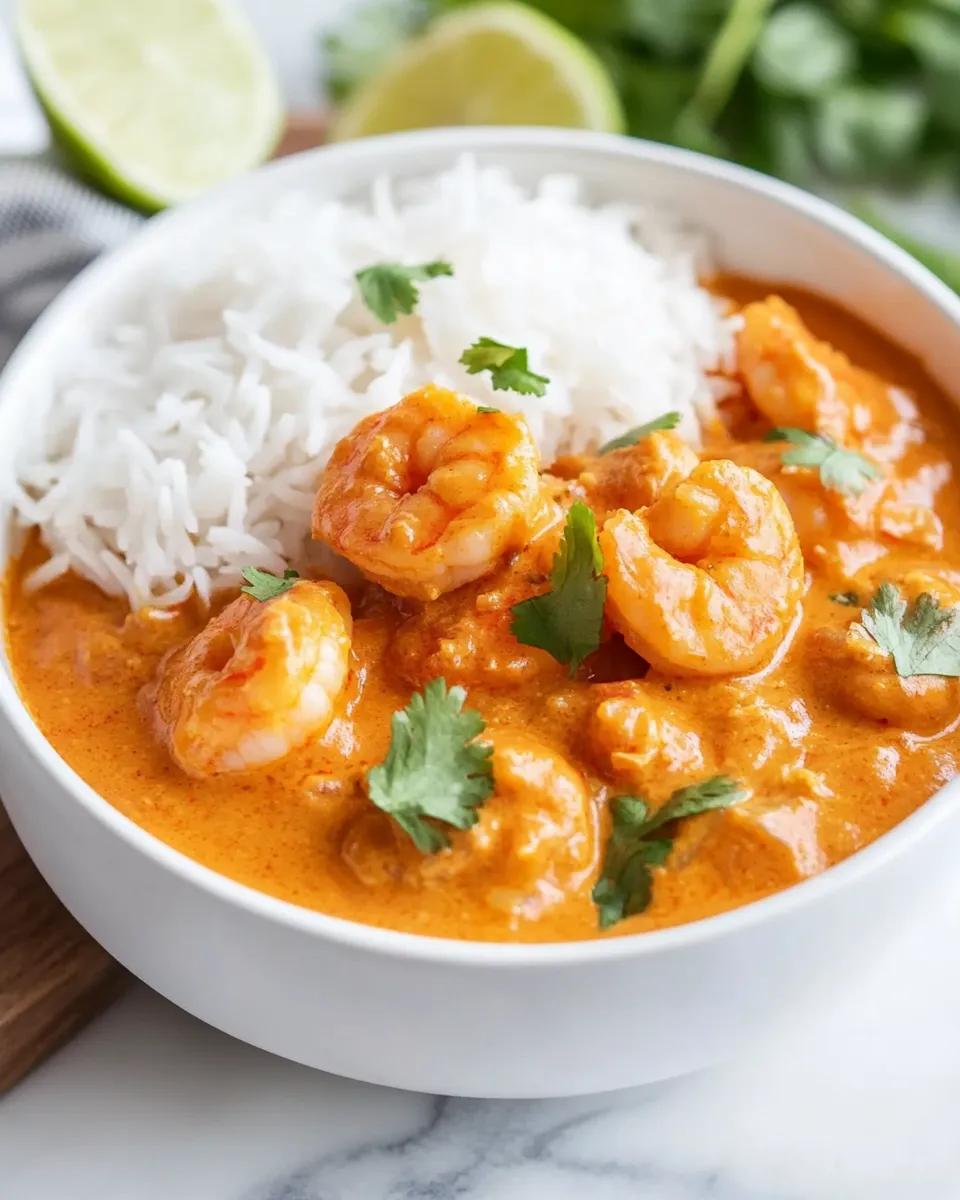
- Use Fresh Spices: Whenever possible, use fresh ground spices or grind whole spices yourself for maximum flavor.
- Don’t Overcook Shrimp: Shrimp cook very quickly—once they turn pink and curl, they’re done!
- Coconut Oil Substitute: If you don’t have coconut oil, you can use vegetable oil or ghee as alternatives.
- Adjust Spice Levels: Add more chili powder or a dash of cayenne for heat, or reduce it for a milder curry.
- Make it Creamier: For an even richer sauce, stir in a bit of full-fat coconut cream or Greek yogurt after cooking (ensure yogurt is plain and suitable for your diet).
Variations and Customizations
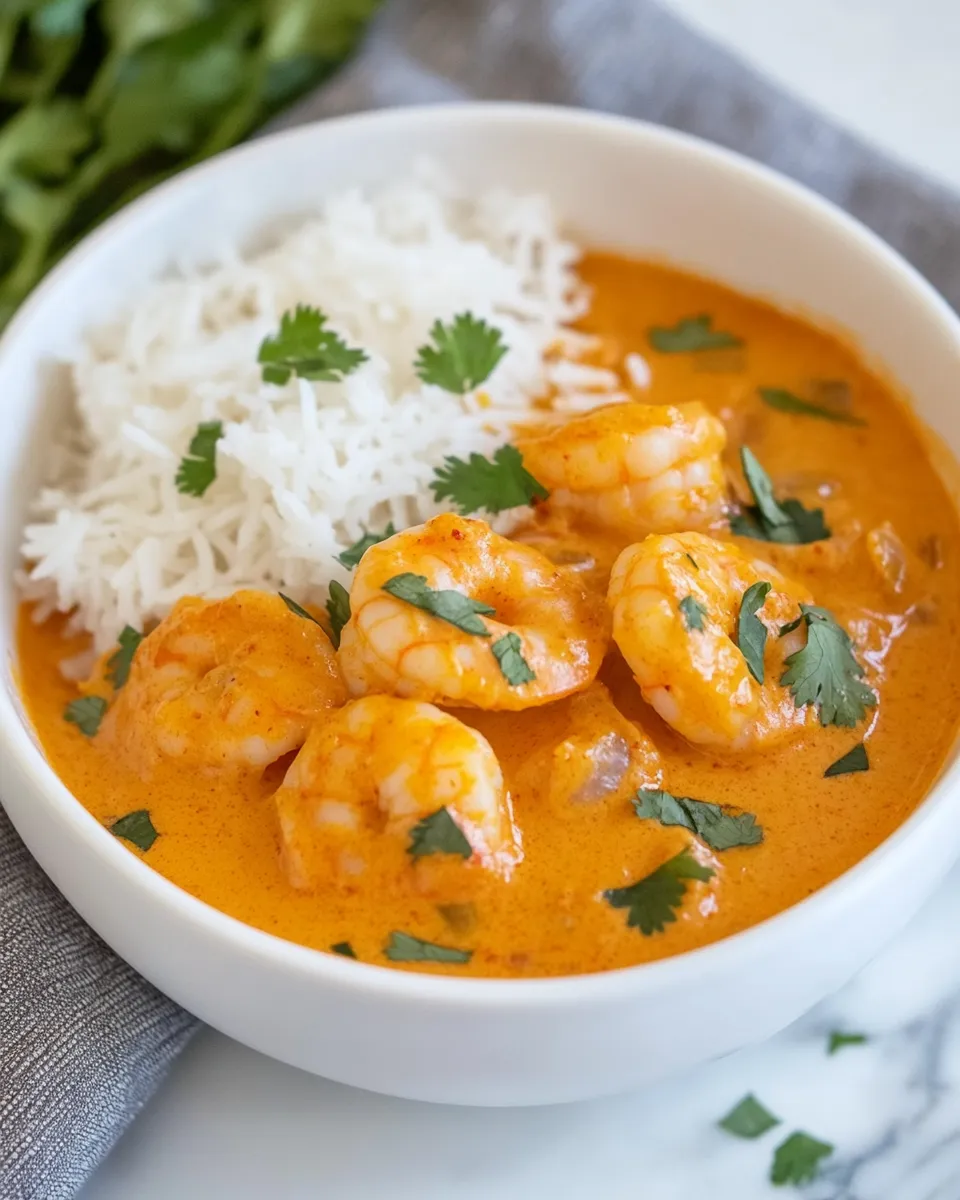
- Add Vegetables: Toss in vegetables like bell peppers, spinach, peas, or cauliflower for extra nutrition and texture.
- Swap Protein: Replace shrimp with chicken, tofu, or chickpeas for different protein options.
- Use Fresh Herbs: Garnish with fresh cilantro, mint, or basil to add fresh herbal notes.
- Make it a Soup: Add extra coconut milk or broth to turn this curry into a comforting soup.
- Serve with Different Sides: Try it with quinoa, cauliflower rice, or flatbreads instead of traditional rice.
How to Store Leftovers
Store leftover Coconut Shrimp Curry in an airtight container in the refrigerator for up to 3 days. When reheating, warm it gently on the stovetop or in the microwave to avoid overcooking the shrimp. If the sauce thickens too much after refrigeration, stir in a splash of water or coconut milk to loosen it up. This curry can also be frozen for up to 1 month. Thaw overnight in the refrigerator and reheat thoroughly before serving.
FAQ
Can I use frozen shrimp for this curry?
Yes! Frozen shrimp work perfectly. Just make sure to thaw them completely and pat them dry before cooking to prevent excess water from diluting the sauce.
Is garam masala necessary?
Garam masala adds a warm, complex flavor but is optional. If you don’t have it, you can omit it or substitute with a pinch of ground cinnamon and cloves for a similar effect.
Can I make this curry vegan?
Absolutely! Replace shrimp with tofu, chickpeas, or vegetables and use vegetable oil instead of coconut oil if preferred. The coconut milk provides plenty of creaminess to keep the dish rich and satisfying.
What can I serve with Coconut Shrimp Curry?
This curry pairs beautifully with steamed basmati rice, jasmine rice, quinoa, naan, or even cauliflower rice for a low-carb option. Fresh cucumber salad or a simple green salad also complements the dish well.
Conclusion
This Coconut Shrimp Curry is a deliciously fragrant and creamy dish that’s surprisingly easy to whip up. With simple ingredients and a handful of spices, you can create a restaurant-quality curry at home that’s bursting with flavor and perfect for any night of the week. Whether you’re cooking for yourself, family, or friends, this recipe is sure to impress and satisfy. Give it a try and savor every bite of this delightful seafood curry!

Coconut Shrimp Curry
Ingredients
- 2 tablespoons coconut oil
- 0.5 yellow onion finely diced
- 1 teaspoon ginger grated
- 1 teaspoon garlic grated
- 0.5 teaspoon ground cumin
- 0.5 teaspoon ground coriander
- 0.5 teaspoon garam masala optional
- 0.5 teaspoon chili powder
- 1 teaspoon ground turmeric
- 1 cup tomato sauce or plain passata
- 1 cup coconut milk fresh or canned
- 1 teaspoon brown sugar
- to taste salt and pepper
- 1 pound shrimp peeled and deveined (31-35 count used)
- 1 teaspoon lime juice fresh
Instructions
Step 1: Prepare Your Ingredients
- Start by peeling and deveining your shrimp if that hasn’t been done already. Finely dice the yellow onion and grate fresh ginger and garlic. Having these prepped will make the cooking process smooth and efficient.
Step 2: Sauté the Aromatics
- Heat 2 tablespoons of coconut oil in a large skillet or saucepan over medium heat. Once the oil is hot, add the diced onion and sauté until translucent and soft, about 4-5 minutes. Add the grated ginger and garlic, stirring frequently, and cook for another 1-2 minutes until fragrant.
Step 3: Toast the Spices
- Add the ground cumin, ground coriander, garam masala (if using), chili powder, and ground turmeric to the pan. Stir well to coat the onions and release the spices’ aromas. Toasting the spices in oil helps deepen their flavors, so don’t skip this step!
Step 4: Add Tomato Sauce and Coconut Milk
- Pour in 1 cup of tomato sauce or plain passata, stirring to combine. Let it simmer for about 3 minutes to reduce slightly. Then, add 1 cup of coconut milk and stir again until the sauce is smooth and creamy.
Step 5: Season the Sauce
- Add 1 teaspoon of brown sugar, salt, and pepper to taste. The brown sugar balances the acidity of the tomato sauce and enhances the overall flavor. Let the sauce simmer gently for 5 minutes to meld all the ingredients together.
Step 6: Cook the Shrimp
- Add the peeled and deveined shrimp to the simmering sauce. Cook for about 3-4 minutes, stirring occasionally, until the shrimp turn pink and opaque. Be careful not to overcook them, as shrimp can become tough when cooked too long.
Step 7: Finish with Lime Juice
- Remove the pan from heat and stir in 1 teaspoon of fresh lime juice. This brightens the flavors and adds a lovely hint of acidity that balances the richness of the coconut milk.
Step 8: Serve and Enjoy
- Serve your Coconut Shrimp Curry hot over steamed basmati rice, with warm naan bread, or alongside your favorite veggies. Garnish with fresh cilantro or chopped green onions for an extra pop of color and freshness.
Equipment
- Large Skillet
- Saucepan


